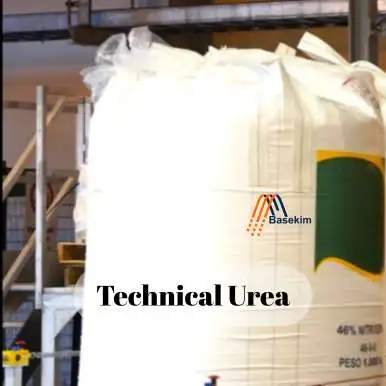
Prilled urea fertilizer is a high-nitrogen product with 46% nitrogen content. Manufacturers create it by spraying molten urea into fine droplets that cool and form small spherical particles, usually 1–2 millimeters in size. Because of its fine texture and fast solubility, many farmers prefer this type of nitrogen fertilizer 46% for crops that require quick nitrogen release.
Table of Contents
ToggleBoth prilled and granular forms deliver the same nitrogen concentration, but particle size makes the difference. Prilled urea has smaller particles, which dissolve faster in water and make it suitable for foliar feeding or liquid blends. Granular urea contains larger, harder granules that resist humidity and perform better in bulk storage or long-distance shipping. Farmers usually choose prilled when they want rapid nutrient availability, while traders prefer granular for its stability in transport.
Advantages:
High nitrogen concentration (46%)
Quick solubility in water for faster crop absorption
Useful for blending into liquid fertilizer formulations
Effective for crops such as rice, wheat, and corn
Disadvantages:
More sensitive to humidity than granular form
Greater risk of caking in long storage
Requires careful packaging and handling during transport
Farmers typically broadcast prilled urea 46% onto soil just before irrigation or rainfall, ensuring nitrogen enters the root zone quickly. Because of its fast solubility, it works well for cereals, vegetables, and industrial crops.
Rice growers often prefer the prilled form because water dissolves the fertilizer immediately in paddy fields. Wheat and corn farmers also rely on it during early stages of growth when nitrogen demand is highest.
Prilled urea can also be used as a foliar spray, but only in diluted solutions. High concentrations may burn leaves, so farmers need to follow recommended application guidelines.
Before ordering, buyers normally check the following values:
Nitrogen: 46% minimum
Biuret: less than 1.5%
Moisture: less than 1%
Particle size: 1–2 mm
Solubility: fully water soluble
Moisture leads to clumping, while excess biuret can harm sensitive plants. International trade often requires SGS certification or a laboratory COA to confirm these parameters.
This agricultural grade urea should be stored in a dry, ventilated warehouse. If it absorbs humidity, the fertilizer cakes and becomes harder to apply. Distributors often use 50 kg bags or jumbo bags with liners to protect the product. For bulk shipments, buyers usually request FOB, CFR, or CIF terms with inspection at the port of loading.
The price of prilled urea fertilizer changes frequently based on natural gas costs, global demand, and shipping rates. Since publishing fixed prices can be misleading, buyers should contact suppliers directly. For accurate quotations and expert guidance, buyers can contact Basekim, where specialists provide updated prices, packaging options, and delivery schedules.
Farmers choose prilled urea fertilizer because it dissolves quickly and delivers nitrogen efficiently to their crops. Traders continue to import it since global demand remains strong, especially in regions with irrigation-based farming systems. Its flexibility for soil application, fertigation, and blending makes it a reliable product in international fertilizer trade.
Prilled Urea 46% N remains a vital fertilizer in agriculture and industry. Its fast solubility, high nitrogen content, and adaptability make it one of the most demanded products in global trade. Buyers should always check specifications, confirm quality with SGS or COA, and ensure proper packaging before shipment. For competitive offers and reliable supply, contact Basekim, a trusted supplier of prilled urea 46% N in international markets.
Download the Material Safety Data Sheet (MSDS) for Urea 46% N. This document includes detailed safety guidelines, handling instructions, and hazard information.
Technical specifications of Urea 46% N fertilizer, including nitrogen content, biuret level, moisture percentage, particle size, and solubility standards.
Comparison table of different urea grades such as Prilled Urea, Granular Urea, and Automotive Grade (AdBlue), with details on applications and nitrogen release properties.